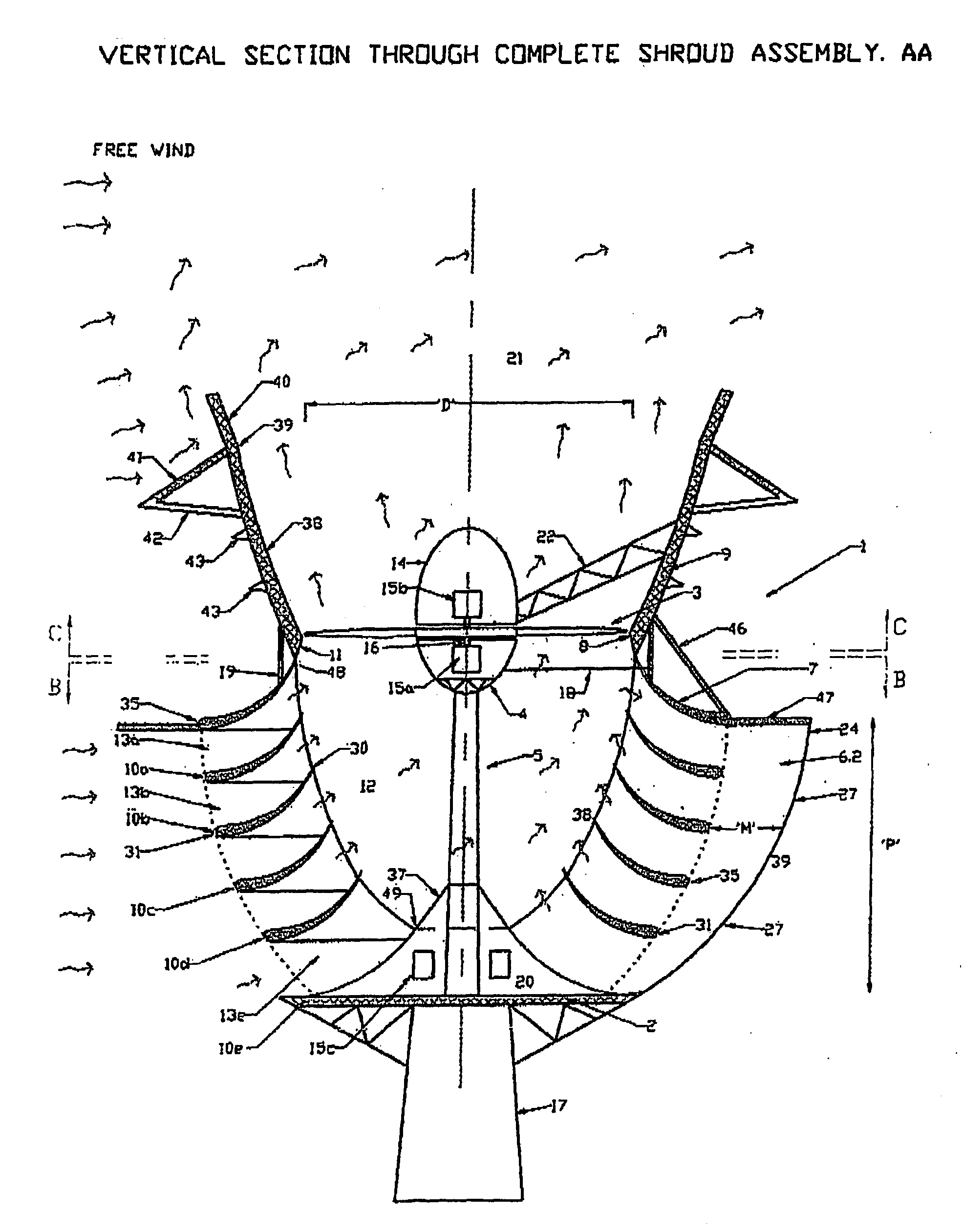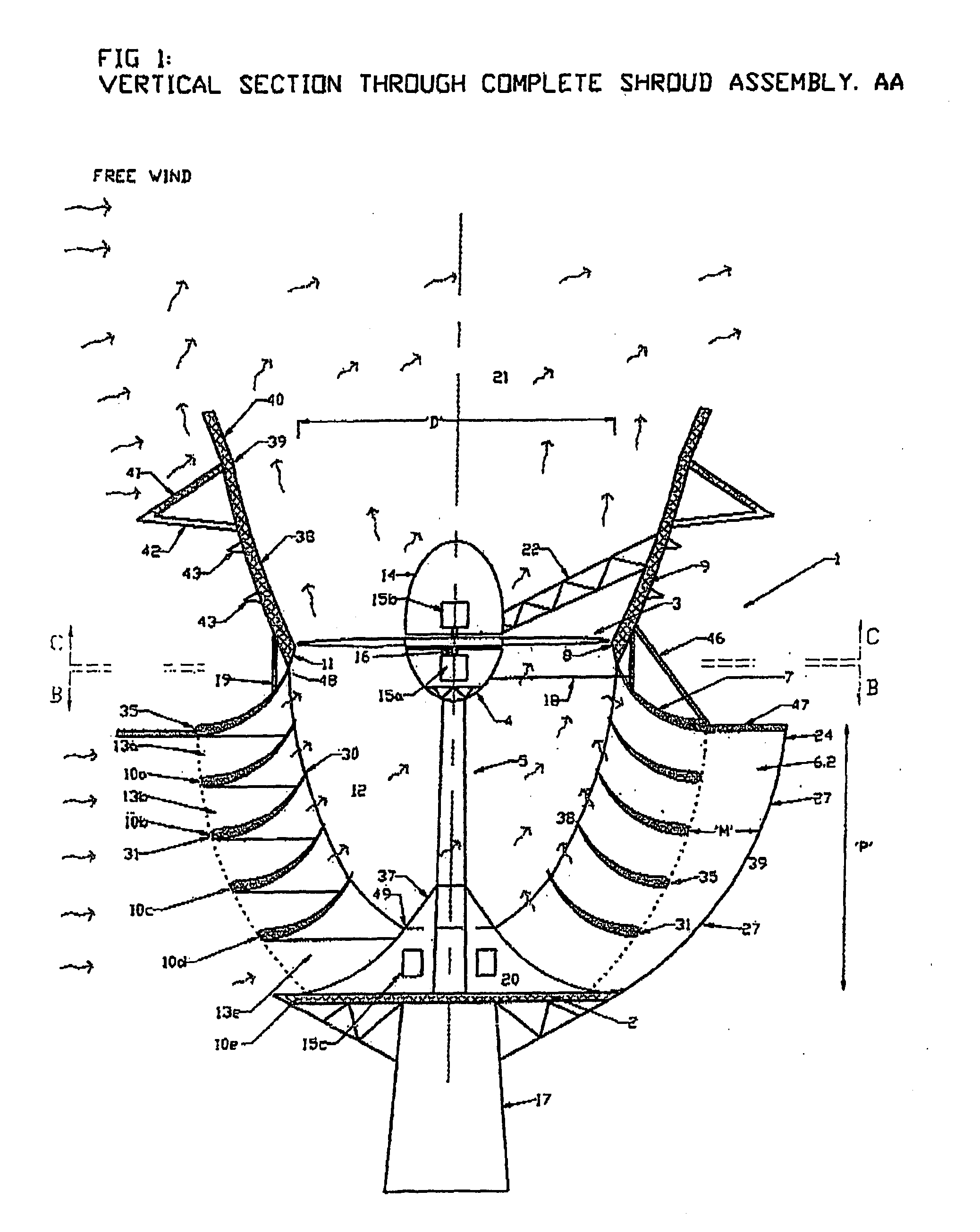Omni-directional wind turbine
a wind turbine and rotor blade technology, applied in the direction of electric generator control, renewable energy generation, greenhouse gas reduction, etc., can solve the problems of high stress level on the rotor blades, rotor speed to be extremely high, and the level is far from being achieved at present, so as to reduce air leakage
- Summary
- Abstract
- Description
- Claims
- Application Information
AI Technical Summary
Benefits of technology
Problems solved by technology
Method used
Image
Examples
Embodiment Construction
General
[0102]FIG. 1 shows an embodiment of the present invention. An omni-directional augmented wind turbine assembly 1 is mounted with its base 2 rigidly connected to a support column 17.
[0103] The turbine rotor 3 of diameter ‘D’ with air foil rotor blades is attached via a central rotating shaft 16 to equipment within the non rotating hub 4 which is supported by a column 5 extending from the base 2 of the complete assembly. The rotor 3 is a horizontal axis type mounted vertically.
[0104] The hub 4 is retained by additional stay cables 18 attached to the shroud diffuser and supporting wall 19. The hub contains the electrical power generator 15a and all associated gear box and control mechanisms for converting the rotor's torque into electrical power. The void area 20 under the last toroid 10e can be utilized to house other electrical gear 15c required for optimizing the electrical power being supplied to the end user. A ladder to access the hub is provided through the column 5 f...
PUM
 Login to View More
Login to View More Abstract
Description
Claims
Application Information
 Login to View More
Login to View More - R&D
- Intellectual Property
- Life Sciences
- Materials
- Tech Scout
- Unparalleled Data Quality
- Higher Quality Content
- 60% Fewer Hallucinations
Browse by: Latest US Patents, China's latest patents, Technical Efficacy Thesaurus, Application Domain, Technology Topic, Popular Technical Reports.
© 2025 PatSnap. All rights reserved.Legal|Privacy policy|Modern Slavery Act Transparency Statement|Sitemap|About US| Contact US: help@patsnap.com



